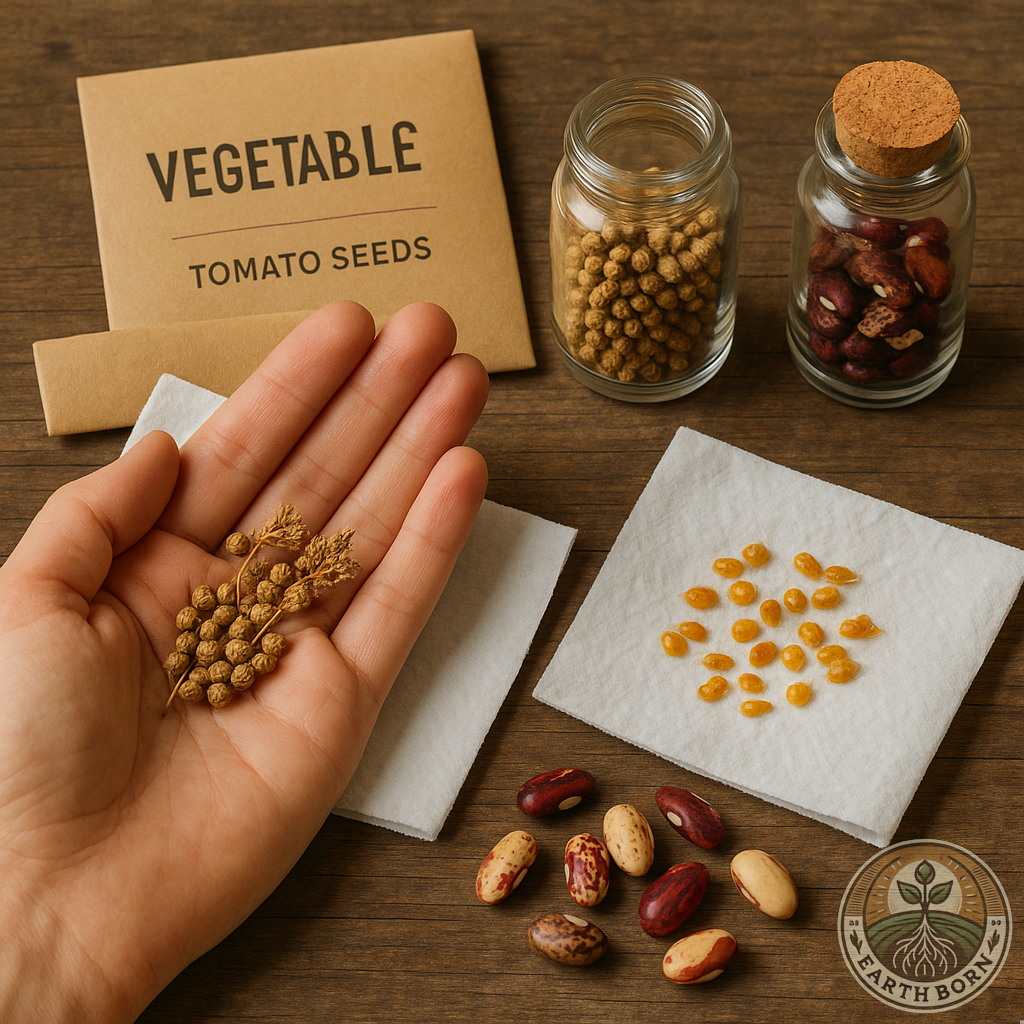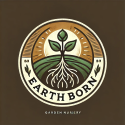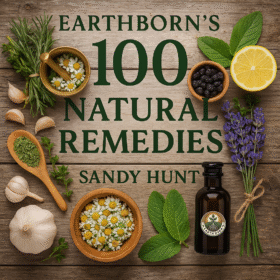
Saving seeds is one of the oldest gardening traditions—and one of the smartest things you can do for your garden. It helps preserve heirloom varieties, adapt your plants to your local conditions, and saves you money every year. Whether you grow food, herbs, or flowers, learning to save seeds means you can create a garden uniquely yours.
💚 Why Save Seeds?
- Cost-effective: Skip buying seeds every year.
- Preserve heritage: Protect heirloom vegetables and medicinal herbs like basil, coriander, and lavender.
- Local adaptation: Your plants will naturally adjust to your soil and climate over time.
- Sustainable gardening: Less packaging, shipping, and waste.
🌿 Which Seeds Should You Save?
Heirloom or Open-Pollinated
Choose heirloom or open-pollinated plants. They grow “true to type” from saved seeds. Avoid hybrids (F1), as their seeds often produce unpredictable results.
Easy Self-Pollinators
These are easiest for beginners:
- Vegetables: Tomatoes, beans, peas, lettuce, peppers.
- Herbs: Coriander, dill, basil, parsley, chives.
Cross-Pollinators
Plants like squash, pumpkins, cucumbers, and some medicinal flowers (like echinacea) can cross-pollinate, so isolate them if you want pure seeds.
🛠 How to Save Seeds
1. Choose the Best Plants
Pick your healthiest, strongest plants with the traits you want—flavour, yield, or disease resistance.
2. Let Seeds Mature Fully
- Dry-seed plants: Beans, peas, dill, coriander, lettuce → Let pods and seed heads dry on the plant.
- Wet-seed plants: Tomatoes, cucumbers, peppers → Leave fruit to ripen past eating stage.
3. Harvest & Clean Seeds
- Dry seeds: Rub or shake pods to release seeds. Remove chaff.
- Wet seeds: Scoop out, wash off pulp (ferment tomato seeds for 2–3 days to remove gel coating).
4. Drying Seeds
Spread seeds on paper or mesh in a cool, dry place out of direct sun. Seeds must be crisp and dry before storing.
📦 Storing Seeds
- Label clearly: Include plant name, variety, and year collected.
- Storage container: Paper envelopes in a jar, or airtight jars with silica gel.
- Conditions: Cool, dark, and dry. (Think fridge or pantry.)
- Viability: Most seeds last 1–5 years; some (like coriander, onion, parsnip) are best used fresh.
🌼 Testing Seeds Before Planting
Place 10 seeds on a damp paper towel, cover, and keep warm. If 8 or more sprout, you have good viability.
Beginner-Friendly Seeds to Start Saving
- Vegetables: Tomatoes, beans, peas, lettuce, peppers.
- Herbs: Basil, coriander, dill, parsley, chives.
- Flowers: Marigolds, calendula, nasturtium (great companions for herbs and veggies).
Tips for Success
- Save from multiple plants for genetic diversity.
- Avoid diseased plants.
- For herbs like coriander and dill, let flowers bloom and dry before cutting seed heads.
- Keep your first year simple—start with just one or two varieties.
🌱 Why This Matters
Seed saving creates independence and resilience. Over time, your saved seeds adapt to your unique garden, leading to healthier plants and better yields. And for medicinal gardeners, it means you always have your herbal allies—like basil for digestion or lavender for relaxation—growing right at home.
Are you saving seeds this season? Share your favourite herb or vegetable variety below!


 **Meet Sprout!** Sprout is your friendly gardening companion at Earthborn, always ready with helpful advice on plant care, medicinal herbs, and natural gardening solutions. From seedling to harvest, Sprout provides expert guidance to nurture your garden and your well-being—making gardening easy, fun, and naturally rewarding.
**Meet Sprout!** Sprout is your friendly gardening companion at Earthborn, always ready with helpful advice on plant care, medicinal herbs, and natural gardening solutions. From seedling to harvest, Sprout provides expert guidance to nurture your garden and your well-being—making gardening easy, fun, and naturally rewarding.
